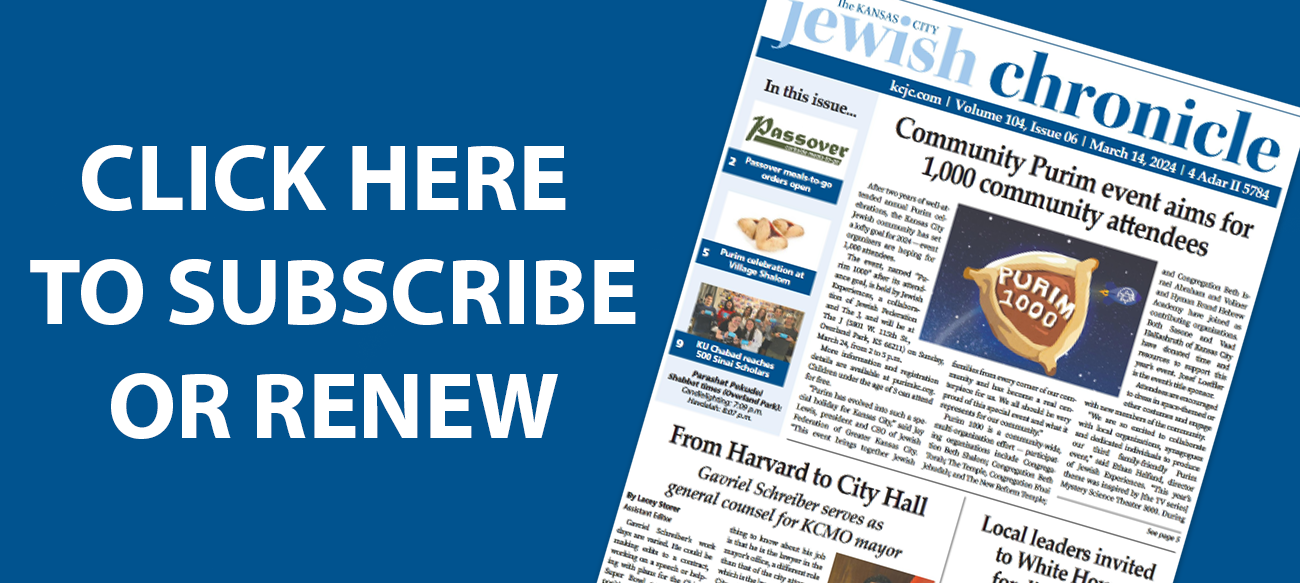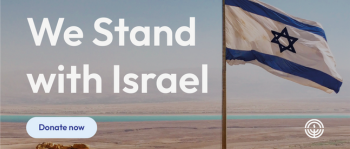We have a geography challenge in the Kansas City Jewish community.
The Jewish Community Campus which houses so many of our communal agencies sits in Overland Park. On one hand, it makes sense that between it and other nearby Jewish communal buildings that a disproportionate number of programs and community events are held south of College Boulevard.
However, our 2021 Jewish Community Study identified two key points related to geography. First, over half of the Jewish community does not live in Overland Park or Leawood. Second, it found that geography truly does matter when it comes to engagement with the Jewish community. Many of the survey’s respondents answered that geography and the location of institutions and programs were a barrier to them attending programming and feeling connected to the Kansas City Jewish community.
In the book of Genesis, we are taught that Abraham’s tent was open on all four sides so guests could approach him without a barrier from any direction. This is such a beautiful metaphor for engagement with the Jewish community. We need to strive to make our tent like Abraham’s, wide open on all four sides. The Community Study shone a light on the fact that for many in this metropolitan area, geographic challenges are a tent flap down and a barrier to entry.
Evolving demographics and geography are not new for Kansas City Jews. In the first part of the 20th century, the center of the Jewish community was on Linwood Boulevard. Then, in the middle part of the century, as the Jewish community moved south, so did the communal organizations; 83rd and Holmes became the hub. Then, in the 1980s, as we migrated further south, most of the buildings moved south to Overland Park.
In 2025 and beyond, the answer for our community will not be to once again move all the Jewish buildings somewhere else — at this point, you name the area, the Kansas City Jewish diaspora has spread there.
Biblically, geography was absolutely paramount for our people. Where we were and where events needed to take place was of utmost importance, especially the seminal moment of our people when God revealed the Ten Commandments to us. God did not do this while we were in Egypt… nor did God do this right after we crossed the Red Sea… nor at some random place in the wilderness.
No, we were led to a specific place, Mt. Sinai, where the Ten Commandments were to be revealed. Place mattered.
From there, our whole religious system was dependent on a very specific place: the Holy Temple in Jerusalem. Jews had to live close to the Temple so they could bring offerings and sacrifices at prescribed times. During that significant era, Judaism was entirely dependent on geography.
Then, in 586 BCE, everything changed when the Temple was destroyed by the Babylonians. Eventually it was rebuilt, but destroyed again in the first century by the Romans. The Jews then, like so many times throughout our history, were resilient. We adapted and found a way to make it work with no Holy Temple. Our rabbis developed a whole new system of laws and customs that could be done anywhere. We are no longer completely dependent on where we are.
Just as we have done every time a challenge has come our way, we will be resilient, we will be innovative, we will adapt, and yes, we will thrive. We have an opportunity to engage so many more people, connect people to one another and make sure even more people feel welcomed.
One big step is to continue to recalibrate the balance between where programming and events take place throughout the metro area. Since the publication of the Community Study in 2021, the community is moving in this direction, but we will need to encourage everyone to intensify their efforts to not simply schedule everything in Overland Park by default. This will take some creativity for larger events since the largest Jewish spaces are out south, but it’s not impossible.
We also need to encourage organizations that do have space outside Overland Park to open their doors more to the community and community events and find opportunities to welcome and host people and programs.
Another big part of the solution will be to continue to develop innovative program models that are not dependent on being in community buildings. Going hyperlocal is one strategy that has been and will continue to be successful. For example, Federation’s PJ Library Family engagement department does PJ in the Neighborhood programs where community members host gatherings in their homes, at local parks or area swimming pools for families in the same neighborhood.
This strategy of doing programming beyond the walls of our institutions works for larger events as well. In spring 2022, hundreds of families came together at Sporting KC’s Children’s Mercy Park in Kansas City, Kansas for a huge community-wide Purim event. This past summer, over 1,000 people bought tickets for the Royals Jewish Heritage Night. Coming up this April, we are hosting our Men’s Night Out event for hundreds of men of all ages for the NCAA basketball championship game.
And, in August of 2026, our community will host the Jewish Community Center’s Maccabi Games, which will bring more than 1000 teenage athletes to Kansas City. It will take a whole community effort to provide home hospitality in every city and suburb in the area as well as host events in every athletic venue throughout KC.
Just as the rabbis of the Talmud helped us understand how we could have Jewish life outside of Jerusalem, in Kansas City we too can have Jewish life beyond 115th and Nall. And just like Judaism in the post-Temple era, we will grow and thrive.
Yes, we do have demographic and geographic challenges, but we also have so much potential. And, we need to keep in mind that in the end, very few Jews in our community live more than 30 minutes away from each other with or without traffic — a dynamic just about every other Jewish community in the country is envious of. Thanks to the 2021 Community Study and the efforts of community leadership, we are moving in the right direction.


